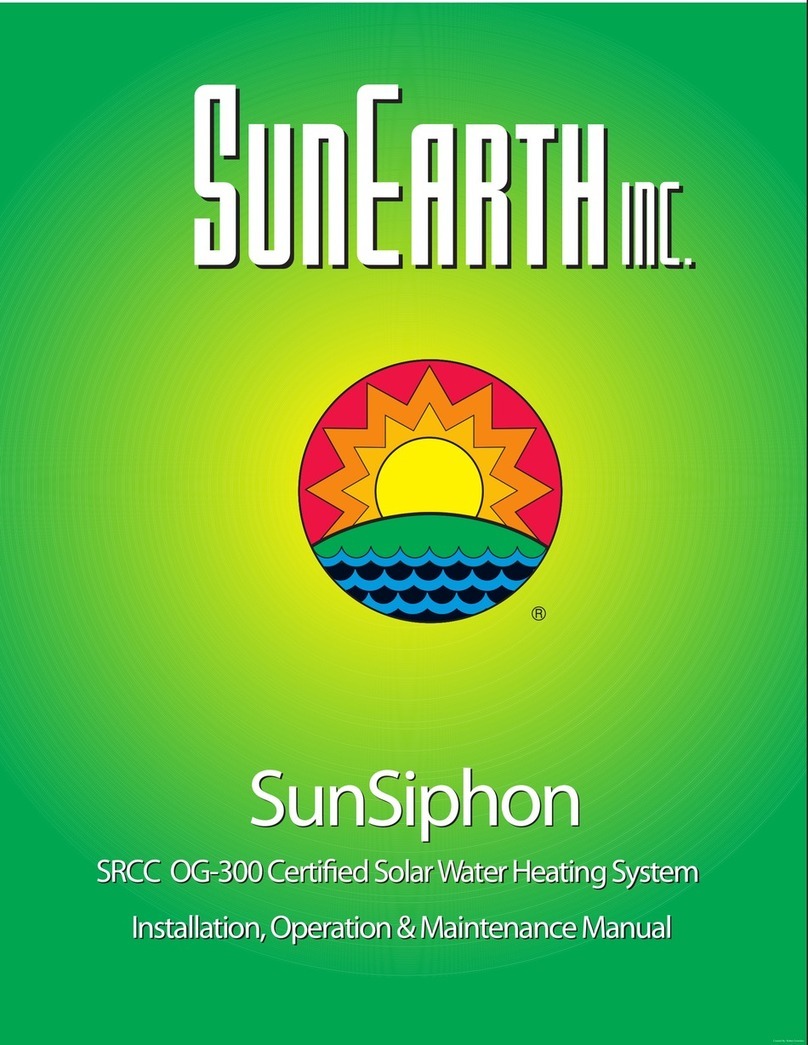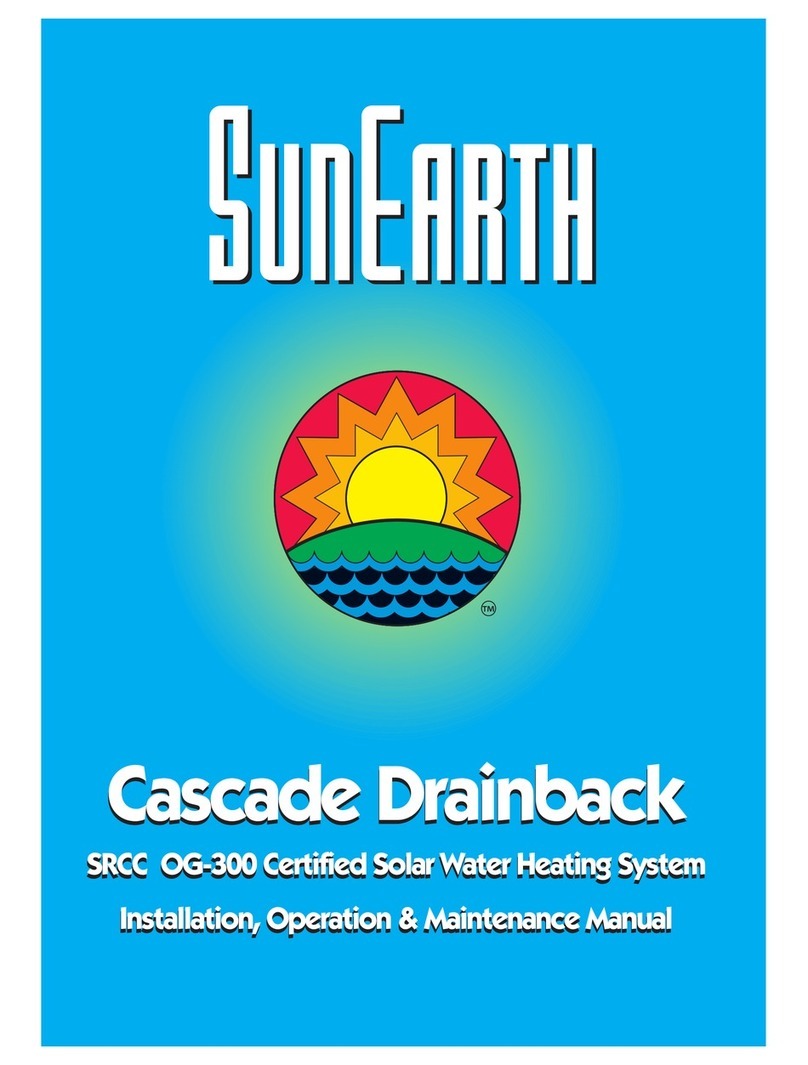7 July 2020
2.2. PLUMBING CONNECTIONS
The collector loop must be plumbed using
copper or stainless steel piping and copper,
brass, bronze or stainless steel fittings. Lead-
free solder shall be used. Use of galvanized
steel, PEX, CPVC or PVC is prohibited. PEX
may be used only in systems that meet the
following conditions:
• Only Solder Fluxes meeting the criteria of
ASTM B 813 should be utilized for joining by
soldering any copper and copper alloy tube
and fittings in the entire solar system.
It may be necessary to increase the pipe size
for longer pipe runs or reduce the pipe size for
shorter runs or higher efficiency pumps. The
pipe must be large enough that the velocity of
the water in the pipe does not exceed 4 ft/s.
Hot water flowing at over 4 ft/s in a pipe will
erode the pipe and reduce system life.
Allowance should be made for expansion and
contraction of piping due to changes in
temperature of the fluid and piping. Use
flexible pipe supports and avoid long straight
piping runs. Include bends and elbows to allow
for expansion such as swing joints at the
collector inlet & outlet.
The collector loop piping, plus any
interconnecting hot water piping shall be well
insulated with high quality flexible closed cell
insulation to minimize heat loss. The insulation
shall have a maximum operating temperature
of 220°F or higher. When it comes to pipe
insulation the rule is simple: thicker is better.
To the extent possible, slide the insulation
material over the pipe without cutting or
taping. All butt joints must be sealed with
contact adhesive. The use of rigid polyethylene
pipe insulation is prohibited. The temperatures
generated by your collector in the summer
months or under stagnation conditions can
melt this type of material. Any above ground
exterior pipe insulation is subject to UV
degradation and must be jacketed, wrapped
with aluminum foil tape, or painted with two
coats of high quality water-based acrylic resin
coating as supplied by the insulation
manufacturer.
The SolarStation HX has four plumbing
connections detailed in Figure 2.2.1. The two
plumbing connections located on the left are
associated with the solar circuit. The two
plumbing connections on the right are
associated with the potable circuit.
The (S2) solar feed/out should be plumbed to
the feed pipe for the solar thermal array. The
(S1) solar return/in should be plumbed to the
return pipe for the solar thermal array. The
(P2) potable feed/out should be plumbed into
the solar storage tank on an upper port with a
dip tube. The (P1) potable return/in should be
plumbed into the solar storage tank on a lower
port or a port with a dip tube as shown in
Figure 2.2.2.
Using the flexible stainless steel or copper tubing,
attach the expansion tank to the expansion
tank port at the lowest point on the left,
below the collector loop pump. Mount the
expansion tank to the wall or to the storage
tank.
All collectors and horizontal pipe runs plumbing
should be supported to allow complete
drainage of the system if necessary, the
2. INSTALLATION
”
”
S2
S1
P2
P1
SOLAR IN
SOLAR FEED
POTABLE IN
POTABLE OUT
S2
S1
P2
P1
Figure 2.2.1: SolarStation HX Connections
Figure 2.2.2: SolarStation HX Potable Connections






























